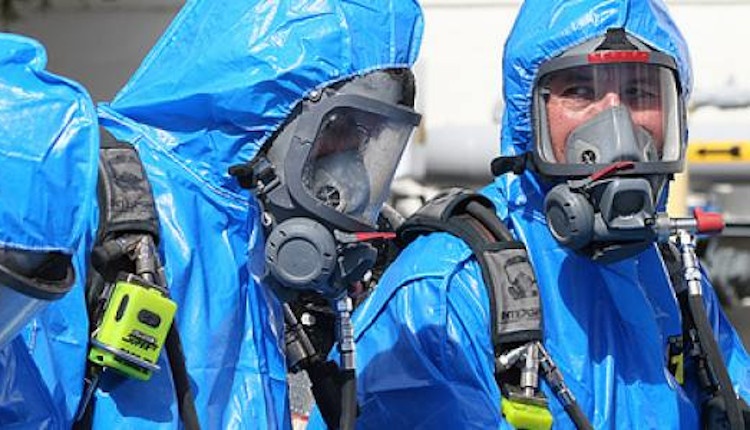
Hazardous materials: firefighters guideline in an incident ground
The Department for Communities & Local Government in the UK, in collaboration of CFRA (Chief Fire & Rescue Adviser), published in 2012 an interesting guideline for a better organization of the firefighters during an incident involving hazardous materials.
This guideline, issued in 2012 is still valid and followed in the UK. It provides robust and flexible guidance to the firefighters that can be adapted to the nature, scale and requirements of the incidents involving hazardous materials. A brief introduction and summary on this official paper.
Fire and Rescue Service Operational Guidance: what are “hazardous materials”?
In everyday language “hazardous materials” means solids, liquids, or gases that can wound people, other living organisms, or damage property, or the environment. They not only include materials that are toxic, radioactive, flammable, explosive, corrosive, oxidizers, asphyxiates, biohazards, pathogen or allergen substances and organisms, but also materials with physical conditions or other characteristics that render them hazardous in specific circumstances, such as compressed gases and liquids, or hot/cold materials.
Why is so important for firefighters knowing how to behave in incidents with hazardous materials involved?
The Department for Communities & Local Government, with the collaboration of CFRA (Chief Fire & Rescue Adviser) published in 2012 an interesting guideline for a better organization of the incident ground, following the safe and correct procedure. The target of this operational guidance, about the “incident involving hazardous materials” is to provide an unvaried approach for common operational practices. This simple rule could give a better explanation about the interoperability between fire and rescue services, other emergency responders, industry experts and other relevant groups. These common principles, practices and procedures are intended to support the development of safe systems of work on the incident ground and to enhance national resilience.
Major incidents involving hazardous materials in the United Kingdom are rare. Such incidents place significant demands on local fire and rescue services and often require resources and support from other fire and rescue services and emergency responders.
However smaller scale incidents involving hazardous materials are more prevalent and these may require a response from any fire and rescue service in England.
Fire and Rescue Service Operational Guidance: intended for who?
The Guidance, which is compiled using the best sources of information known at the date of issue, is intended for use by competent persons. The application of the guidance does not remove the need for appropriate technical and managerial judgement in practical situations with due regard to local circumstances, nor does it confer any immunity or exemption from relevant legal requirements, including by-laws. Those investigating compliance with the law may refer to this guidance as illustrating an industry standard.
This book could contain an interesting suggestion that could interest also Firefighters, first responder and EMS from a different country, which not follow law, guidelines or practices from the United Kingdom or Commonwealth Countries.
This book promotes and enhance good practice within the Fire and Rescue Service and is offered as a current industry standard. It is envisaged that this will help establish high standards of efficiency and safety in the interests of employers, employees and the general public.
The Fire and Rescue Service Operational Guidance – Incidents involving hazardous materials provides robust yet flexible guidance that can be adapted to the nature, scale and requirements of the incident. The Chief Fire and Rescue Adviser is grateful for the assistance in the development in this guidance from a wide range of sources, including the fire and rescue service and a range of experts from a wide range of industries and other organisations. It is anticipated that this guidance will promote common principles, practices and procedures that will support the fire and rescue service to resolve incidents involving hazardous materials safely and efficiently.


